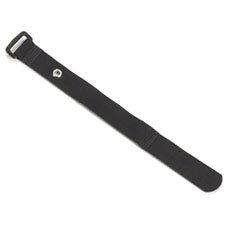I agree that adequate cable support is important; but in a modest home situation I don't think you need to stress too much about bearing points. For smaller bundles, I've used
these a few times - available at HD; Intended for Romex but not bad for holding a handful of RG6/Cat6 wires attached to a floor joist or a rafter. I've seen much worse - from cable ties with the screw to zip-ties around a rafter to even a few rounds of electrical tape around. Not what I'd choose, but for 2-3 cables it won't hurt anything. I also have a stapler that's friendly to cables but it's so rare that I run a single cable anywhere that when I do, I just use hammer-in or screw-in cable hooks.
Testers: I have the Ideal VDV but I can't even remember the last time I used it; I bought it while on an out-of-state super simple wiring job and didn't have my Fluke... but I don't recall it having TDM (or much else about it for that matter). I googled for a 3M unit as described and found one but they're discontinued - so I have no idea what quality was like. Regardless, my point stands - The Monoprice one would do its job. Reviews state that it does OK but appears to be a cheap chinese product. HD sells one for comparable price with no TDM but a few remotes. In all reality, the best you're going to get at this price range is continuity testing - not full blown certification. I actually might be inclined to go with the HD one for the remotes just to help trace which jack is which - but that's less of an issue with some experience. I've been using the good fluke testers for a while and to be honest, I'm glad I don't have to choose between cheap ones. I've had a couple experiences where all the testing in the world with cheap testers said wiring was correct, but other issues were present that could only be detected with a certification tester - things that would be impossible to diagnose without the right certification tester. That said, this has only come up in commercial installs for me.
This actually brings me to another point in running cables... this may be common sense; may not - so I'm going to cover it. I've seen too many people pull a crapload of cable without any good markings then have to sort it out later with fox/hound to line the wires up or I've even seen people just terminate them all then identify them after and have a real kludge (two category cables in a single box in the den could be ports 9 and 14).
To make your life easier, start with a floorplan - mark where you want all the jacks on the floorplan. Then in a pattern that makes sense, number them around the home (on the floorplan) in a way that sequentially makes sense. Now, as you go to pull your wire, I start at the termination end (not the closet where it all comes together) and where reasonable, I start from the longest run and work to the shortest to help situations where you run out of cable on a long run. Start out with a sharpie and write the jack number on each cable, then wrap the ends with electrical tape (and pull string if needed). If you have trouble keeping track, also write the number on the box/spool of that run so when the run is done, you know what number to write on the other end before you cut it. After, cross out that number on the box/spool and keep going. When you do the termination, you'll cut the wires to even lengths, but you can re-write or label the wires before you cut them to size. This will help make a more meaningful numbering scheme and make termination go much faster.
DEL or others may have more to add or have a different way they like - but having *some* plan is better than haphazardly pulling a bunch of wires and having to sort out the mess after.

